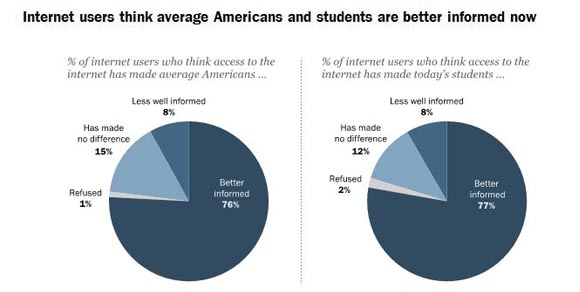
In today’s diverse information culture, libraries play an important role in promoting the many ways that communities stay informed about the world around them. As digital technologies and media become more and more ingrained in everyday life, Americans are increasingly recognizing their value as an educational and creative outlet.
Results out from a new Pew survey indicate that Internet users feel digital technology has had an overall positive impact on their ability to learn and share ideas. This survey is part of a series by Pew to evaluate the impact of the Internet 25 years after its conception. The new study elaborates on a survey done earlier this year by offering new insight into Americans’ attitudes about the ways these media can keep them informed and connected to their communities.
The survey of 1,066 adult Americans found that an overwhelming majority thought the Internet has improved their ability to learn and stay informed (87%), and saw the abundance of information online as a boon rather than a burdensome overload (72%).
In addition, not only are Americans confident in how digital and mobile technologies have improved their own ability to learn new things, three-fourths also believe that access to the Internet has made “average Americans” and “today’s students” better informed (76% and 77%, respectively). Since 2006 and 2007, the number of Americans surveyed who said that the Internet has positively impacted their capacity to create and share ideas with others have steadily increased.
As the Internet and other digital media continue to permeate our lives and the ways we relate to those around us, librarians in the U.S. are well positioned to compliment the optimism of users through information literacy education and improved ways for users to access, create, and share knowledge.
Note: This post is part of our series, “The Weekly Number.” In this series, we highlight statistics that help tell the story of the 21st-century library.